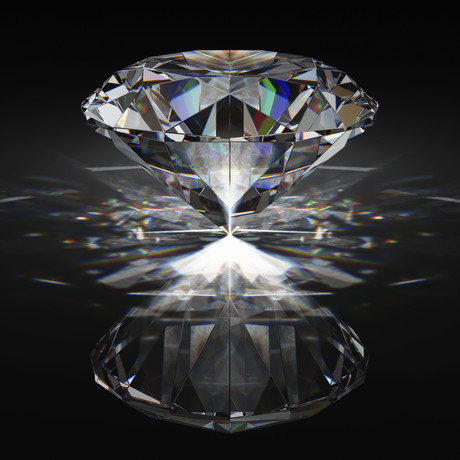Diamonds are a scientist's best friend

Researchers in the lab of Professor Robert Nemanich, one of the world’s foremost experts on diamonds, are utilising the unique characteristics of these precious gemstones in some innovative applications.
A professor of physics at Arizona State University (ASU), Nemanich noted that diamonds have several unusual properties. For example, they can sustain incredibly high temperatures and electric fields, and they also conduct heat better than any other material. These properties make them suitable for the electronics market, which is currently dominated by silicon — a versatile material that nonetheless falls flat in some areas.
“When it comes to high-temperature, high-power, radiation-hard devices, silicon doesn’t work as well — in fact, it doesn’t work at all,” said Manpuneet Kaur Benipal, a postdoctoral researcher in Nemanich’s lab. Together with colleague Brianna Eller, and with Nemanich as an adviser, Benipal is now starting a company, ADVENT Diamond, to make electronic devices out of diamond, working with doped diamond layers grown on small diamond plates.
Doping allows scientists to grow diamonds specifically for electronic purposes. Here’s how it works: take a diamond substrate, or a small sample of diamond, and immerse it in a plasma composed of a mixture of chemicals. The atoms from the added chemicals organise themselves on the surface of the diamond, replicating the crystal structure of the substrate.
The lab-grown diamond layers that result include impurities that change the material’s electrical properties. Benipal and Eller use microfabrication processing of the doped diamond layers so that they behave precisely in the way they want. The process works so well that a small diamond can do the same work as materials that are much larger in size.
While silicon continues to be more cost-effective for low-temperature applications, like smartphones and laptops, diamond is a good choice for anything with a high-powered engine, such as an electric vehicle or an aircraft. Because diamond is excellent at conducting heat, it would completely replace the need for a cooling system. Diamond also works well at very high pressures, which makes it suitable for deep-earth drilling.
The applications for diamond are quite literally out of this world, with Nemanich recently awarded a grant from NASA to build diamond electronics for a rover that will explore the surface of Venus, which measures a whopping 450°C.
Through the NASA grant, Nemanich and his team are building an amplifier — a device that increases the power of an electrical signal. But Eller said that diamond could be useful for other parts of the rover as well, since very few other materials can function in such extreme heat.
Lastly, researchers at Nemanich’s lab have partnered with proton beam experts at Mayo Clinic Arizona to harness the power of diamonds in cancer treatment. As diamonds are radiation-hard, meaning they take longer than other materials to degrade, they could be utilised in proton beam technology — a form of radiation therapy that precisely targets and destroys tumours with highly charged protons.
As demand for high-powered electronics increases, diamonds will have an even larger role to play. According to Eller, “There is always a need for something bigger, something better, something more efficient, something that works at higher temperature or higher voltage, which we think diamond can do.”
Electronex Sydney a major success
More than 1000 trade visitors and delegates have attended the Electronics Design & Assembly...
Gartner: Global AI chips revenue to grow 33% in 2024
Gartner has forecast that the revenue from AI semiconductors globally will total $71 billion in...
Electronex Expo returns to Sydney for 2024
Electronex — the Electronics Design and Assembly Expo will return to Sydney in 2024,...





